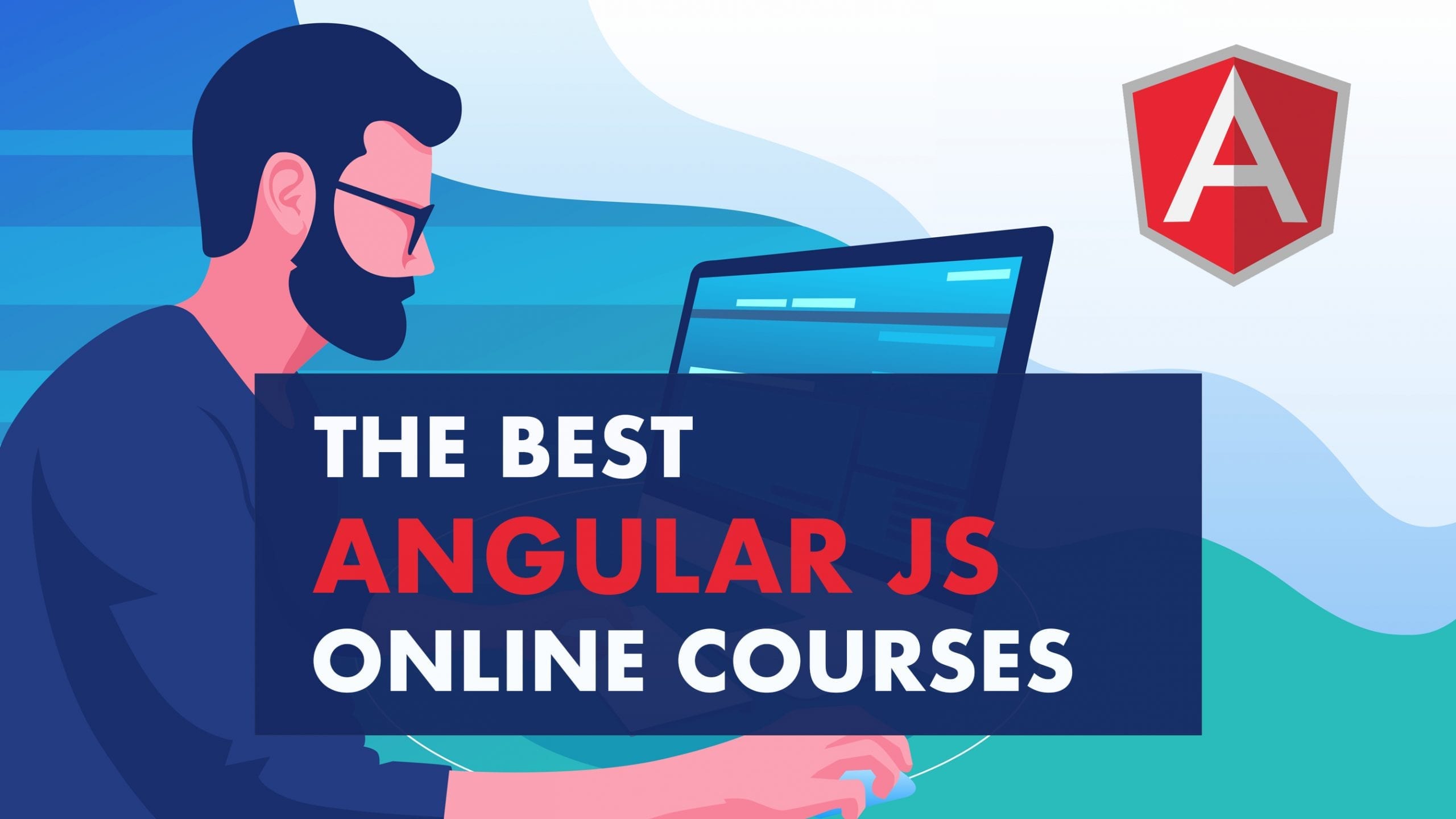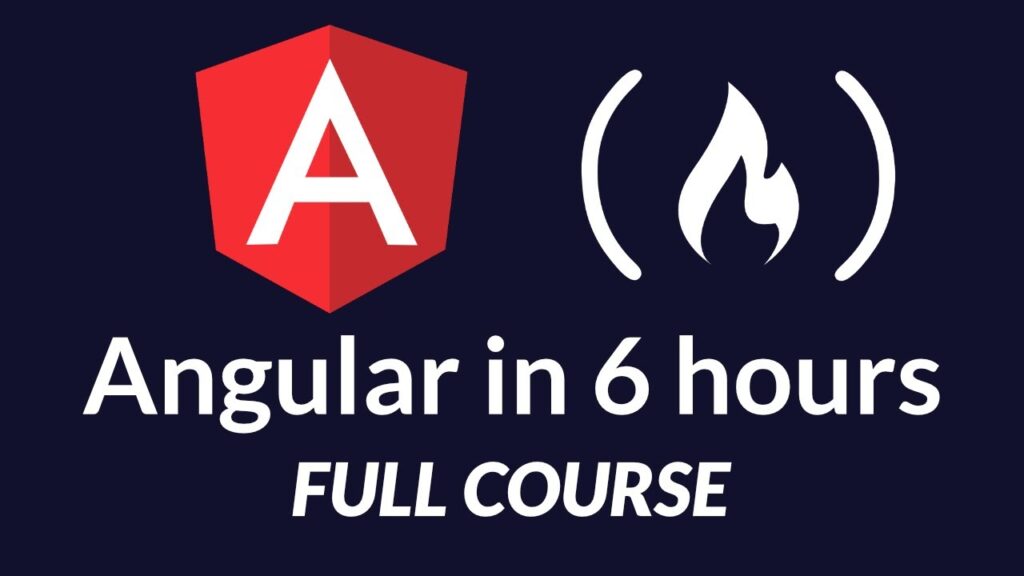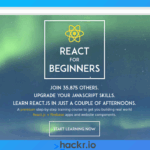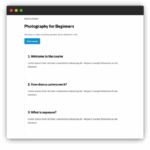Then, I heard whispers. Whispers about "frameworks," "TypeScript," and something called "Angular." It sounded intimidating, a mythical beast guarding the gates of true web development. But I was determined. My journey into building truly modern web apps was about to begin, and it all started with one crucial decision: enrolling in an Angular Course.
The Web Dev Wilderness: Before My Angular Course
Before I found my path, the frontend landscape felt like a dense jungle. I knew JavaScript, sure, but building anything substantial felt like wrestling an octopus – too many moving parts, too hard to keep track. Every new feature meant more tangled code, and debugging became a nightmare. I’d try to follow online tutorials, but they often jumped straight into complex concepts without truly explaining the why behind them. I needed structure, guidance, and a friendly hand to lead me through the wilderness.
That’s when the idea of a dedicated Angular Course clicked. I wasn’t just looking for another set of videos; I was looking for a mentor, a roadmap, and a community. I wanted to move beyond just writing code and truly understand how to engineer robust, scalable web applications.
What Exactly Is Angular, Anyway? (A Beginner’s Guide from My Perspective)
Before diving into my course experience, let’s clear up what Angular actually is, because I know that initial confusion well.
Imagine you’re building a massive skyscraper. You could just stack bricks one by one, but it would be slow, messy, and probably wouldn’t stand up straight. Angular, for me, felt like discovering a master architect’s blueprint, a specialized construction crew, and a whole toolkit designed specifically for building modern, high-rise web applications.
It’s a powerful, opinionated framework maintained by Google. "Opinionated" just means it has a lot of built-in ways it suggests you do things, which, trust me, is a huge blessing for keeping your code organized. It’s especially brilliant for creating those smooth, responsive SPAs I dreamt of, where clicking a link doesn’t refresh the whole page but cleverly updates just the necessary parts.
And then there’s TypeScript. This was another one of those terms that initially made me nervous. But my Angular Course quickly showed me that TypeScript is essentially JavaScript with superpowers. It adds "types" to your code, which means you tell it what kind of data your variables will hold (like numbers, text, or true/false). This might sound like extra work, but it catches so many common errors before you even run your code, saving you countless headaches. It makes your code more predictable, easier to read, and a joy to work with, especially on bigger projects.
Diving In: My Experience with the Angular Course
Choosing an Angular Course was one of the best decisions I made. It wasn’t just about learning syntax; it was about adopting a new way of thinking about web development. Here’s what stood out on my journey:
1. The Friendly Face of TypeScript
As I mentioned, TypeScript was initially a hurdle. But the course introduced it gently, explaining its benefits clearly. I quickly learned to appreciate how it made my code more robust and readable. It was like having a smart assistant constantly checking my work, pointing out potential mistakes before they even happened. Suddenly, debugging became less of a frantic search and more of a guided fix. This foundation was crucial.
2. Components: Building Blocks Made Simple
One of Angular’s core ideas is "components." Imagine building a LEGO castle. Instead of one giant, unwieldy piece, you have smaller, self-contained bricks for walls, turrets, and gates. Each component in Angular is like one of those LEGO bricks – a self-contained unit with its own HTML template, CSS styling, and TypeScript logic.
My Angular Course broke this down beautifully. I learned how to create a navigation bar component, a product card component, or even a user profile component. The beauty? You can reuse these components anywhere, making your application modular and easy to manage. It was an "aha!" moment for me, realizing how much cleaner and more organized my code could become.
3. Data Binding & Directives: Making Things Interactive
This was where my applications truly started to come alive. The course patiently walked me through different types of data binding:
- Interpolation: Displaying data from my TypeScript code directly into my HTML. It was like saying, "Hey, Angular, show the user’s name right here!"
- Property Binding: Dynamically setting attributes of HTML elements. Want to disable a button based on a condition? Easy!
- Event Binding: Responding to user actions like clicks or input changes. When the user types, I want my app to do something.
And then there were directives. These are like special instructions you give to your HTML. *ngIf to show or hide elements, *ngFor to loop through a list and display multiple items – these simple directives felt like unlocking superpowers, allowing me to build dynamic interfaces with minimal fuss. The Angular Course provided plenty of practical examples that solidified my understanding.
4. Services & Dependency Injection: Keeping Things Tidy
As my applications grew, I started wondering: "Where do I put all the code that fetches data from a server or handles complex logic that isn’t directly tied to a visual component?" The Angular Course introduced me to "Services."
Services are essentially single-purpose classes that you can inject into your components. Think of them as specialized tools that your components can "ask for" when they need to perform a specific task, like fetching a list of products from an API. This concept, known as "Dependency Injection," felt a bit abstract at first, but it quickly became clear how much it helped keep my components lean, focused, and reusable. It’s a cornerstone of building maintainable Angular applications.
5. Routing: Navigating Your Application
Remember those SPAs I dreamed of? Angular’s routing module was the key. My course explained how to define different "routes" in my application, each corresponding to a specific view or component. Clicking a link no longer meant a full page reload; instead, Angular would efficiently swap out components, making the user experience incredibly smooth and fast. I learned how to pass data through routes, protect routes with guards (for authentication), and create a seamless navigation experience.
6. Forms & API Calls: Bringing It All Together
No modern web app is complete without forms for user input and the ability to communicate with a backend server (via APIs). The Angular Course covered both extensively. I learned about template-driven forms and reactive forms, each suited for different scenarios. Making HTTP requests to fetch or send data to an API became second nature. This was the point where all the pieces started to connect, and I could envision building truly full-featured applications.
Beyond the Code: The Unseen Benefits of an Angular Course
While the technical skills were invaluable, the Angular Course offered so much more than just lines of code.
- Structured Learning: Instead of hopping between disjointed tutorials, the course provided a logical progression, building knowledge step by step. This systematic approach prevented me from getting overwhelmed.
- Best Practices: I didn’t just learn how to do something, but why certain approaches are considered best practice in the Angular ecosystem. This saved me from developing bad habits.
- Problem-Solving Mindset: Good courses challenge you. I struggled, I debugged, and I persevered. This process honed my problem-solving skills in a way that passive learning never could.
- Confidence Boost: Completing a well-structured Angular Course and building actual projects gave me immense confidence. I no longer felt like an amateur; I felt like a capable frontend developer ready to tackle real-world challenges.
- Community & Support: Often, good courses come with forums or communities where you can ask questions, get help, and learn from others’ experiences. This network was incredibly valuable.
Who Should Consider an Angular Course?
From my experience, I’d say an Angular Course is a fantastic investment for:
- Beginners in Web Development: If you’ve got a basic grasp of HTML, CSS, and JavaScript, and you’re ready to build robust, modern applications, Angular offers a structured path.
- Developers Stuck in "Vanilla" JavaScript: If you find your pure JavaScript projects becoming unwieldy, Angular provides the organization and tools you need.
- Those Aiming for Enterprise-Level Projects: Angular is heavily favored by large organizations and enterprises due to its scalability, maintainability, and opinionated structure.
- Career Changers: Learning a sought-after framework like Angular can significantly boost your job prospects in frontend development.
- Anyone Wanting to Build SPAs: If the idea of fast, interactive, single-page applications excites you, Angular is a top contender.
My Top Tips for Your Angular Course Journey
If you’re considering embarking on your own Angular adventure, here are a few nuggets of wisdom from my own path:
- Don’t Just Watch, DO: This is the most important tip. Actively code along with the instructor. Pause, experiment, break things, and then fix them. Muscle memory is key.
- Embrace TypeScript: It might feel like an extra layer at first, but trust me, it’s a superpower. The more you use it, the more you’ll appreciate its benefits.
- Build Your Own Projects: The true learning happens when you apply what you’ve learned to your own ideas, however simple. Start with a basic to-do list, then a recipe app, then something more complex.
- Ask Questions: Don’t be afraid to use forums, Q&A sections, or online communities. Chances are, someone else has had the same question.
- Be Patient: Angular has a learning curve. There will be moments of frustration. That’s normal! Stick with it, take breaks, and celebrate small victories.
- Understand the "Why": Don’t just memorize syntax. Always try to grasp why Angular does things a certain way. This understanding makes you a better problem-solver.
The Unforgettable Transformation
Looking back, that Angular Course wasn’t just a series of lessons; it was a turning point. It transformed me from someone who could make static webpages into a developer capable of building complex, interactive web applications. The fear I once had of "frameworks" evaporated, replaced by confidence and excitement.
If you’re standing at the edge of the web development wilderness, feeling overwhelmed by the sheer possibilities and challenges, I wholeheartedly recommend finding a good Angular Course. It might just be the map, the compass, and the guide you need to build the web applications of your dreams. Your unforgettable journey awaits!



